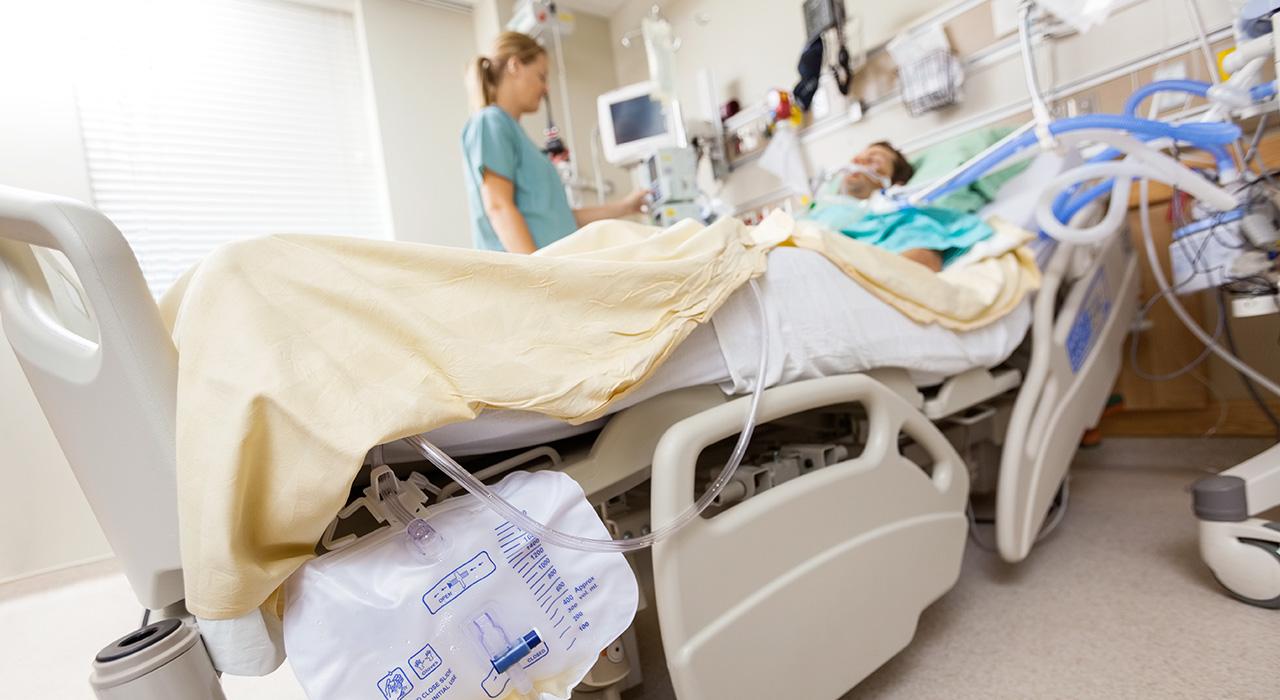Índices pronóstico generales para la valoración de pacientes graves en unidades de cuidados intensivos
Palabras clave:
cuidados críticos, pronóstico.Resumen
En el ámbito de la Medicina Intensiva cobra particular interés estimar el impacto de las diferentes enfermedades sobre las reservas fisiológicas del enfermo, para así estratificar los pacientes en categorías de riesgo. Con este fin se utilizan diferentes modelos de predicción en las unidades de cuidados intensivos (UCIs), con una amplia gama de propósitos. Por esta razón se realizó una revisión sobre los índices pronóstico general para la valoración de pacientes graves en unidades de cuidados intensivos con el objetivo de describir su surgimiento, composición, eficacia y aplicaciones clínicas principales.
Descargas
Citas
1. González JC. Índices y factores pronósticos en pacientes con peritonitis difusas secundarias [Internet]. Tesis en opción al grado científico de doctor en ciencias médicas. Ciudad de La Habana, 2005. [citado 22 Abr 2016]. Disponible en: http://tesis.repo.sld.cu/380/
2. Kelley MA. Predictive scoring systems in the intensive care unit [Internet]. UpToDate. [citado 11 May 2016]. Disponible en: http://www.uptodate.com/contents/predictive-scoring-systems-in-the-intensive-care-unit
3. Knaus, WA, Zimmerman JE, Wagner DP, Draper, EA, Lawrence DE. APACHE. Acute physiology and chronic health evaluation: a physiologically based classification system. Crit Care Med. 1981; 9(8): 591-7.
4. Wheeler, MM. APACHE: an evaluation. Crit Care Nurs Q. 2009; 32(1): 46-8.
5. Niewiński G, Starczewska MH, Kański A. Prognostic scoring systems for mortality in intensive care units. The APACHE model. Anaesthesiol Intensive Ther. 2014; 46(1): 46-9.
6. Knaus WA, Draper EA, Wagner DP, Zimmerman JE. APACHE II: A severity of disease classification system. Crit Care Med. 1985; 13(10): 818-29.
7. Breslow MJ, Badawi O. Severity Scoring in the Critically Ill: Part 1—Interpretation and Accuracy of Outcome Prediction Scoring Systems. Chest. 2012; 141(1):245-52.
8. Keegan MT, Gajic O, Afessa B. Severity of illness scoring systems in the intensive care unit. Crit Care Med. 2011 Jan; 39(1):163-9.
9. Gilani MT, Razavi M, Azad AM. A comparison of Simplified Acute Physiology Score II, Acute Physiology and Chronic Health Evaluation II and Acute Physiology and Chronic Health Evaluation III scoring system in predicting mortality and length of stay at surgical intensive care unit. Niger Med J. 2014 Mar; 55(2):144-7.
10. Minne L, Ludikhuize J, de Jonge E, de Rooij S, Abu-Hanna A. Prognostic models for predicting mortality in elderly ICU patients: a systematic review. Intensive Care Med. 2011; 37:1258–68.
11. Yourman LC, Lee SJ, Schonberg MA, Widera EW, Smith AK. Prognostic Indices for Older Adults: A Systematic Review FREE. JAMA. 2012; 307(2):182-92.
12. Vincent JL, Moreno R. Clinical review: Scoring systems in the critically ill. Critical Care. 2010; 14:207-11.
13. Das K, Ozdogan M, Karateke F, Uzun AS, Sozen S, Ozdas S. Comparison of APACHE II, P-POSSUM and SAPS II scoring systems in patients underwent planned laparotomies due to secondary peritonitis. Ann Ital Chir. 2014 Jan-Feb; 85(1):16-21.
14. Li HY, Li SJ, Yang N, Hu WL. Evaluation of nosocomial infection risk using APACHE II scores in the neurological intensive care unit. J Clin Neurosci. 2014 Aug; 21(8):1409-12.
15. Okazaki H, Shirakabe A, Hata N, Yamamoto M, Kobayashi N, Shinada T, et al. New scoring system (APACHE-HF) for predicting adverse outcomes in patients with acute heart failure: Evaluation of the APACHE II and Modified APACHE II scoring systems. J Cardiol [Internet]. 2014 Apr 29. [citado 11 May 2016]; 64 (6): 441-9. Disponible en: http://www.sciencedirect.com/science/article/pii/S0914508714000951.
16. Knaus WA, Wagner DP, Draper EA, Zimmerman J E, Bergner M, Bastos PG, et al. The APACHE III prognostic system: Risk prediction of hospital mortality for critically ill hospitalized adults. Chest. 1991; (100): 1619-36.
17. Cook DA. Performance of APACHE III Models in an Australian ICU. CHEST 2000; 118:1732–38.
18. Reina A, Vázquez G, Aguayo E, Bravo I, Colmenero M, Bravo M, PAEEC Group. Mortality discrimination in acute myocardial infarction: comparison between APACHE III and SAPS II prognosis systems. Intensive Care Med. 1997; 23: 326–30.
19. Zimmerman JE, Kramer AA, McNair DS, Malila FM. Acute Physiology and Chronic Health Evaluation (APACHE) IV: hospital mortality assessment for today´s critically oll patients. Crit Care Med. 2006, 34(5): 1297-310.
20. Le Gall JR, Loirat P, Alperovitch A, Glaser P, Granthil C, Mathieu D, et al. A simplified acute physiology scores for ICU patients. Crit Care Med. 1984; 12(11): 975-77.
21. Ohno Machado L, Resnic FS, Matheny ME. Prognosis in Critical Care. An Rev Biomed Eng. 2006; 8(1): 567-99.
22. Le Gall JR, Lemenshow S, Saulnier F. A new simplified acute physiology score (SAPS II) based on a European/North American multicenter study. JAMA.1993; 270(24): 2957-63.
23. Moreno RP, Metnitz PG, Almeida E, Jordan B, Bauer P, Campos RA, et al. SAPS 3- from evaluation of the patient to evaluation of the intensive care unit. Part 2: Development of a prognostic model for hospital mortality at ICU admission. Intensive Care Med. 2005; 31(10): 1345-55.
24. Metnitz PG, Moreno RP, Almeida E, Jordan B, Bauer P, Campos RA, et al. SAPS 3- from evaluation of the patient to evaluation of the intensive care unit. Part 1: Objectives, methods and cohort description. Intensive Care Med. 2005; 31:1336–44.
25. Lemeshow S, Teres D, Pastides H, Avrunin JS, Steingrub JS. A method for predicting survival and mortality of ICU patients using objectively derived weights. Crit Care Med. 1985; 13(7): 519-25.
26. Rapoport, J, Teres D, Lemenshow S, Gehlbach, SH. A method for assessing the clinical performance and cost-effectiveness of intensive care units: a multicenter inception cohort study. Crit Care Med. 1994; 22(9), 1385-91.
27. García de Lorenzo, A. Scores pronósticos y criterios diagnósticos en el paciente crítico. 2ª ed. Edciones Ergon; 2006.
28. Cullen, DJ, Nemeskal, AR, Zaslavsky AM. Intermediate TISS: a New Therapeutic Intervention Scoring System for non-ICU Patients. Crit. Care Med. 1994; 22(9), 1406-11.

Publicado
Cómo citar
Número
Sección
Licencia
Avisos de derechos de autor propuestos por Creative Commons
1. Política propuesta para revistas que ofrecen acceso abierto
Aquellos autores/as que tengan publicaciones con esta revista, aceptan los términos siguientes:- Los autores/as conservarán sus derechos de autor y garantizarán a la revista el derecho de primera publicación de su obra, el cuál estará simultáneamente sujeto a la Licencia de reconocimiento de Creative Commons que permite a terceros compartir la obra siempre que se indique su autor y su primera publicación esta revista.
- Los autores/as podrán adoptar otros acuerdos de licencia no exclusiva de distribución de la versión de la obra publicada (p. ej.: depositarla en un archivo telemático institucional o publicarla en un volumen monográfico) siempre que se indique la publicación inicial en esta revista.
- Se permite y recomienda a los autores/as difundir su obra a través de Internet (p. ej.: en archivos telemáticos institucionales o en su página web) antes y durante el proceso de envío, lo cual puede producir intercambios interesantes y aumentar las citas de la obra publicada. (Véase El efecto del acceso abierto).







